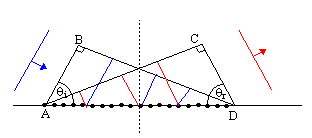Please wait while we process your payment
If you don't see it, please check your spam folder. Sometimes it can end up there.
If you don't see it, please check your spam folder. Sometimes it can end up there.
Please wait while we process your payment
Get instant, ad-free access to our grade-boosting study tools with a 7-day free trial!
Learn more



This site is protected by reCAPTCHA and the Google Privacy Policy and Terms of Service apply.
Create Account
Select Plan
Payment Info
Start 7-Day Free Trial!

Annual
2-49 accounts
$22.49/year + tax
50-99 accounts
$20.99/year + tax
Select Quantity
Price per seat
$29.99 $--.--
Subtotal
$-.--
Want 100 or more? Request a customized plan
You could save over 50%
by choosing an Annual Plan!

SAVE OVER 50%
compared to the monthly price!
| Focused-studying | ||
| PLUS Study Tools | ||
| AP® Test Prep PLUS | ||
| My PLUS Activity | ||
$22.49/month + tax
Save 25%
on 2-49 accounts
$20.99/month + tax
Save 30%
on 50-99 accounts
| Focused-studying | ||
| PLUS Study Tools | ||
| AP® Test Prep PLUS | ||
| My PLUS Activity | ||
No Fear provides access to Shakespeare for students who normally couldn’t (or wouldn’t) read his plays. It’s also a very useful tool when trying to explain Shakespeare’s wordplay!
Erika M.
I tutor high school students in a variety of subjects. Having access to the literature translations helps me to stay informed about the various assignments. Your summaries and translations are invaluable.
Kathy B.
Teaching Shakespeare to today's generation can be challenging. No Fear helps a ton with understanding the crux of the text.
Kay H.
No Fear provides access to Shakespeare for students who normally couldn’t (or wouldn’t) read his plays. It’s also a very useful tool when trying to explain Shakespeare’s wordplay!
Erika M.
I tutor high school students in a variety of subjects. Having access to the literature translations helps me to stay informed about the various assignments. Your summaries and translations are invaluable.
Kathy B.
Teaching Shakespeare to today's generation can be challenging. No Fear helps a ton with understanding the crux of the text.
Kay H.
Create Account
Select Plan
Payment Info
Start 7-Day Free Trial!
You will only be charged after the completion of the 7-day free trial.
If you cancel your account before the free trial is over, you will not be charged.
You will only be charged after the completion of the 7-day free trial. If you cancel your account before the free trial is over, you will not be charged.
Order Summary
Annual
7-day Free Trial
SparkNotes PLUS
$29.99 / year
Annual
Quantity
51
PLUS Group Discount
$29.99 $29.99 / seat
Tax
$0.00
SPARK25
-$1.25
25% Off
Total billed on Nov 7, 2024 after 7-day free trail
$29.99
Total billed
$0.00
Due Today
$0.00
Promo code
This is not a valid promo code
Card Details
By placing your order you agree to our terms of service and privacy policy.
By saving your payment information you allow SparkNotes to charge you for future payments in accordance with their terms.
Powered by stripe
Legal
Google pay.......



Please wait while we process your payment

Sorry, you must enter a valid email address
By entering an email, you agree to our privacy policy.
Please wait while we process your payment

Sorry, you must enter a valid email address
By entering an email, you agree to our privacy policy.
Please wait while we process your payment

Your PLUS subscription has expired
Please wait while we process your payment
Please wait while we process your payment

Reflection
The first macroscopic manifestation of scattering we must examine is reflection. In the case
of a homogenous, isotropic, dense medium we know that a light wave would continue to propagate in the
forward direction. However, the argument we presented for this breaks down when there is a
discontinuity. In fact, at any interface between media such a discontinuity will cause some part of the wave
to propagate in the backwards direction -- this is called reflection. Referring to , which is a modification of , we can see that this must occur
because atoms at the very surface cannot 'pair off' with atoms λ/2 away in order to cancel out
radiation in the backwards direction, as all atoms deep in the medium can. When light is reflected while
moving from a less to a more optically dense medium (air to water, for example) it is called 'external
reflection.' Importantly, reflection occurs without color-bias; all wavelengths are reflected equally from a
dielectric surface.

Consider the diagram . The direction of the reflected wave is determined by the
phase difference between the scatterers on the surface. This, in turn, is caused by the angle made by the
incident wave and the surface (the angle of incidence, θi). If AB is an incoming wavefront and
CD is an outgoing wavefront such that the spherical wave emitted from A will be in-
phase with the wave just emitted from D (this is true is AB = CD).

 =
=  , where θr is the angle of the reflected wave. But clearly, BD = AC, so:
, where θr is the angle of the reflected wave. But clearly, BD = AC, so:
| sinθi = sinθrâá’θi = θr |
Reflection from a smooth surface (such as a mirror) is called specular reflection (any irregularities in the surface are small compared to λ). When the surface is rough in comparison to λ, diffuse reflection results.
Please wait while we process your payment





